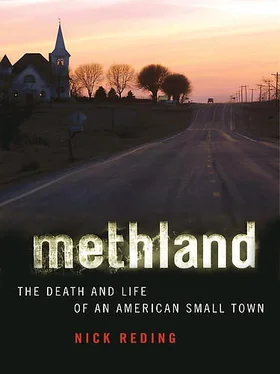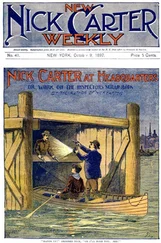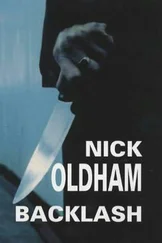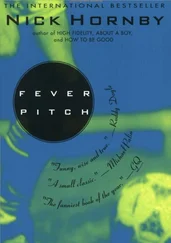Drug trafficking is a lot like the common flu. It’s long been guaranteed to mutate periodically within a fairly closed system. Drug traffickers stay around by making keys to government locks, at times before the locks are even thought of. This is what happened when the DTOs began moving to meth production via pseudoephedrine in anticipation of—as opposed to as a reaction to—Gene Haislip’s legislation in 1996. But drug trafficking, says Naím, has gotten a lot easier in the last twenty years. Or at least a lot harder to follow. Traffickers, like an RNA virus, affect antigenic drift all the time, and infections come and go as epidemics every decade: LSD and PCP in the seventies, cocaine in the eighties, crack in the early nineties, and crank ever since. All a drug needs in order to mutate is a body politic; the shift occurs where that body is weakest—where unemployment is high and poverty is rife, and people are disabused of their marginalization, or their “disconnectedness” from the “core.” The places where this occurs are not just the rogue states that Barnett imagines—the Yemens and the Tajikistans and the Ecuadors of the world. The “core” has holes of its own, in Ottumwa and Oelwein, in Cylinder and Algona, and in El Paso.
Naím writes that since “the early 1990s, global illicit trade has embarked on a great mutation. It is the same mutation as that of international terrorist organizations like al-Qaeda or Islamic Jihad… All have moved away from fixed hierarchies and toward decentralized networks; away from controlling leaders and toward multiple, loosely linked, dispersed agents and cells; away from rigid lines of control and exchange and toward constantly shifting transactions as opportunities dictate. It is a mutation that governments in the 1990s barely recognized and could not, in any case, hope to emulate.”
When I read that, it reminded me of one of the fears I heard voiced many times while researching this book: that drug traffickers will someday team with terrorist organizations. Or, at the very least, to exploit the same weaknesses in the social fabric that the Arellano Felix Organization and the Gulf Cartel have so successfully exploited. In truth, this has already happened at least once.
In 2001, Tony Loya—who’d run Operation Snowcap from Guatemala back in 1987—retired from DEA and took a job as the director of the National Methamphetamine Chemical Initiative (NMCI). His job was to track the meth business on behalf of the Department of Justice and to anticipate the DTOs’ next moves. Loya noticed that gas stations that sell soda, cigarettes, and basic pharmaceuticals like cold medicine—or what Loya calls “stop-and-robs”—were buying enormous amounts of pill-form pseudoephedrine. In addition, the gas station owners had special machines that could pop entire rows of pseudoephedrine pills from their blister packs in the way that a garlic press squeezes the meat from the skin. In the Central Valley, agents found dump sites littered with thousands of empty blister packs near dismantled labs.
Once Loya noticed this, he began investigating whether the same thing was happening in other areas of the country. It was: convenience stores in New Jersey were doing the same thing. As it turns out, the Jersey stores were owned by Yemeni nationals who were not only importing bulk cold medication; they were illegally importing powdered pseudoephedrine and routing it to trafficking organizations. When DEA moved to close down their businesses, the Yemenis moved to Canada, mostly to Toronto and Montreal, where there were no laws governing the importation of bulk pseudoephedrine. There was nothing Loya could do.
By 2002, DEA agents had informed Loya, who cultivates law enforcement contacts the world over, that high-level Mexican traffickers were going regularly to Detroit. Loya knew from other contacts that production of meth in the Central Valley was expanding exponentially, and reasoned that the Mexicans were courting the Yemenis by meeting them in Detroit, close to the Yemenis’ home turf. On a hunch, Loya authorized nighttime surveillance of remote roads at Canadian points of entry. Where there typically wouldn’t have even been any cars at night, he said, the video caught images of dozens of eighteen-wheelers. When searched, several of the vehicles were found to have loads of pseudoephedrine hidden in the fender wells.
Soon, said Loya, in an indication that the relationship between the DTOs and the Yemenis was becoming stronger than ever, the Yemenis began traveling to see their Mexican partners in the Mexicans’ backyard: Las Vegas.
“They’d have these big dinners,” said another former DEA official who ran wiretaps on the dinner meetings. “Lots of wine—very lovey-dovey. Then we’d get the tapes back from our wiretaps, and the Mexicans would call their friends back in California and say, ‘If it weren’t for the money, I’d kill these heathen Moor sons of bitches.’ And the Yemenis are in their hotel rooms on the phone with Toronto saying, ‘If it weren’t for the money, I’d kill those stinking Catholic infidel sons of bitches.’”
The wiretaps also revealed that the Yemenis were funneling hundreds of millions of dollars to the terrorist organization Hamas. It was just luck, said Tony, that he was able to put together the clues.
In the end, any moves against the DTOs were just a minor irritation, for the real connection between drugs and terror is seen in Barnett’s concept of “disconnected” states and Naím’s “invisible border.” The DTOs simply reassorted themselves, moving production from the isolated farmlands of California’s Central Valley to the Mexican state of Michoacán, for the reason that, as another former DEA agent described it, “the further you get from the limited bandwidth of control surrounding the seat of government, the more autonomous and lawless things get.” Michoacán is several states removed from Mexico City, the country’s capital. The former DEA agent went on, “We won’t even send agents to Michoacán—they’d be killed immediately. Even Mexican federal people can’t get in there. It’s like its own nation within Mexico, in the same way that all major trafficking points—Juárez, Nogales, et cetera—are like city-states. There’s no way to control them centrally.” That lack of control extends north of the border, all throughout the poor, disconnected parts of the United States. In Ottumwa, Tom McAndrew is trying to figure out how to keep his men from having their families killed.
Two weeks before meeting Rudy, I’d been in Georgia and Alabama in the wake of Hurricane Katrina. I’d gone there because, according to Tony Loya, record amounts of meth had been flowing into the area from the East Texas border during the past few months. There had been an increase in drug cartel violence around the sibling towns of Laredo and Nuevo Laredo that had made every major American newspaper’s front page off and on for weeks. The Mexican government, in reaction, had sent in the army. The drug lords, in counter-suit, had redoubled their attacks on one another. To that end, they had begun employing a gang known as the Zetas, former American-trained members of the Mexican special forces.
One morning, I’d spoken with Sherri Strange, then the DEA special agent in charge of the Atlanta office. According to her, the meth market in her seven-state area was so good that many of the Zetas had gone into business for themselves, armed with their expertise in surveillance, weaponry, and counterintelligence.
“The DTOs hold Atlanta,” said Strange. “And they’re here in a way that, to me, after twenty-five years being on the street and in charge in various locations, is frightening. We used to have Mexicans—and excuse the term, I’m only talking about a few but, I’m sorry, all the big players are Mexican—that were pretty minor league. They were just guys trying to make enough money in a year to go back home and retire. Now, in the last eight months, there’s a sea change. We’re getting traffickers who are as highly trained as we are in intelligence gathering, evasion techniques, weapons. They’re scary. I can literally walk down the street—and this happened here a while back—and just know what’s going on. You see them, if you know what to look for, and you just think, ‘Oh my God.’”
Читать дальше












